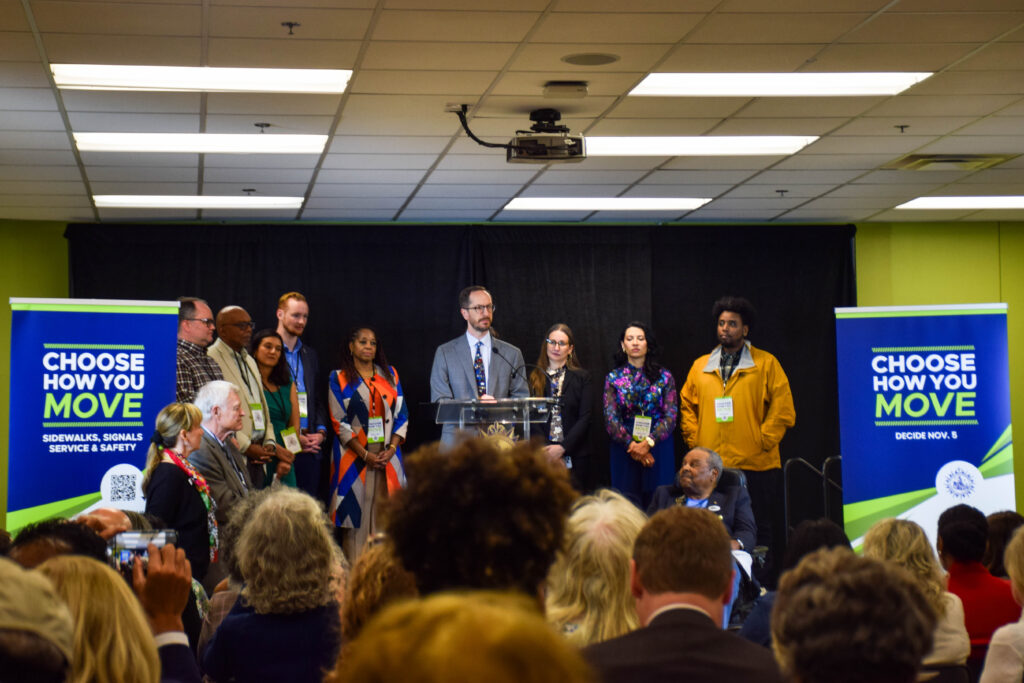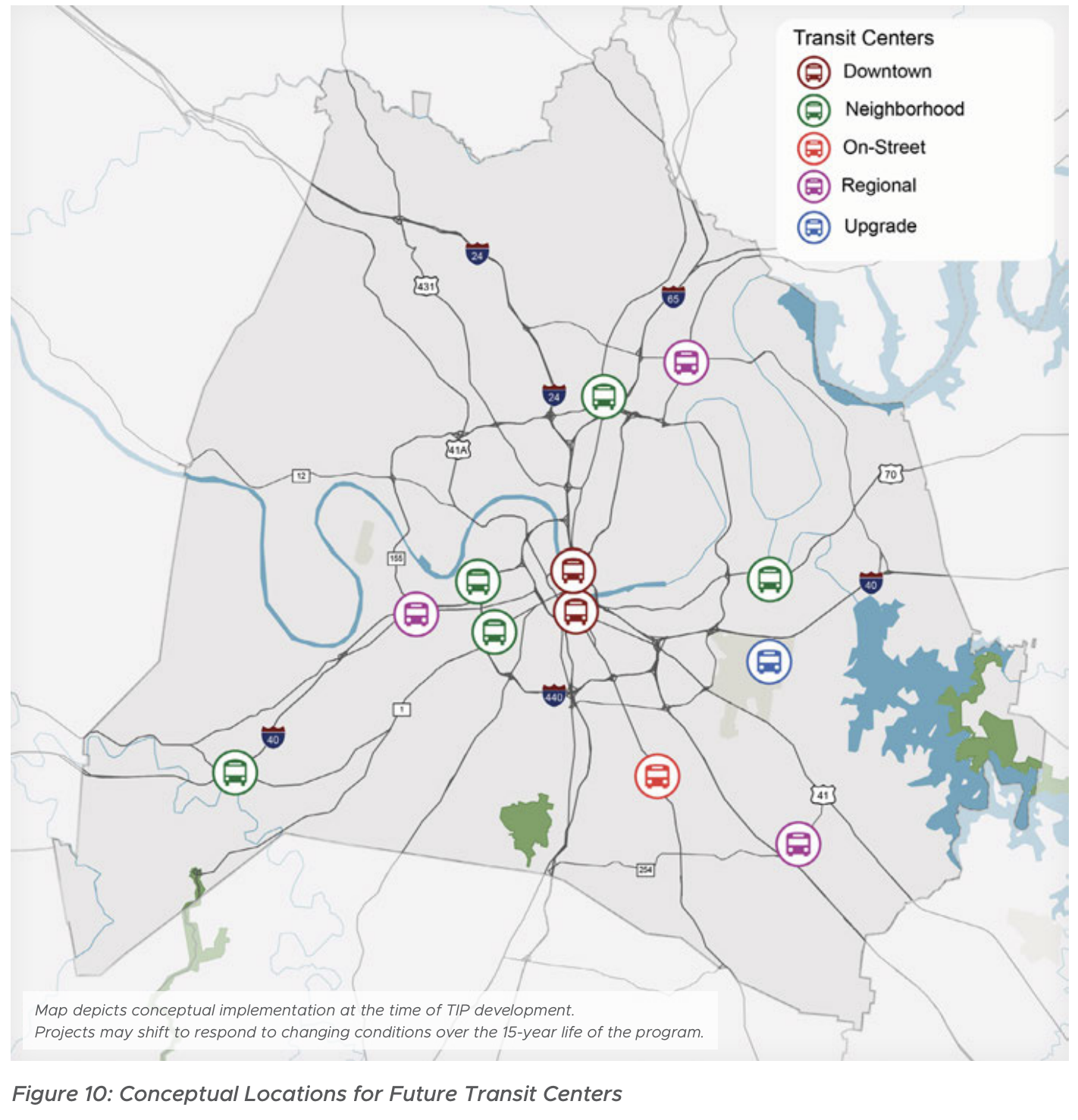
Across 94 pages, Nashville Mayor Freddie O’Connell has laid out a proposal to transform the city’s transportation systems.
The $3.1 billion proposal would establish dedicated funding — raised through a half-cent sales tax increase — to construct new sidewalks and bike lanes, update traffic signals, build safer pedestrian crossings, increase bus service frequency, and, in some areas, construct dedicated bus-only lanes.
Before appearing for voters on the Nov. 5 ballot, the proposal will undergo an independent financial audit and require approval from the state’s comptroller and Nashville’s Metro Council.
What else is included?
Beyond changes to Nashville’s roads and buses, the plan also intends to create community spaces oriented around transportation.
1. Transit center network
One component of these spaces would be a network of a dozen new or updated transit centers. At present, Nashville only has three: the main Elizabeth R. Duff Transit Center in downtown, the Hillsboro Transit Center, and the not-yet-open North Nashville Transit Center. Currently, Nashville relies mostly on simple street-side bus stops.
The centers would not all look the same. The plan outlines five different types of centers, ranging in size. Some, like the downtown hub, will include as many as eight bus bays. Others, such as those within neighborhoods, will be outfitted with only two or three bays. All would feature bikeshare, parking, restrooms, vending machines, climate-controlled waiting areas, real-time arrival information, ticket vending machines, phone charging stations and Wi-Fi.
The transit centers would lessen Nashville’s heavy reliance on routing buses through the downtown center. Currently, routes often require riders to stop or change buses there. A network like this would enable more neighborhood-to-neighborhood trips and faster travel times.
In addition to updates to the airport’s existing bus waiting area, the plan proposes 11 locations for additional centers: Antioch, Bellevue, Donelson, the East Bank, Madison, Nolensville, Skyline, SoBro, TSU, Vanderbilt and West Nashville.
The plan intends to complete the network by 2032. Construction costs are estimated at $129 million.

This map shows where transit hubs would be located across Davidson County.
2. Park and ride facilities
The plan also proposes the construction of 17 park and ride facilities. Each would include 100-200 parking spaces. Many would be constructed near the proposed transit centers. They could also fill in other gaps on the map, with suggested locations including Joelton, Burton Hills, Antioch, Hermitage, White Bridge, West End, Dickerson Pike, Gallatin Pike and Harding Place.
The anticipated cost for these facilities is $27.5 million.
3. Land acquisition
The plan also dedicates $33.6 million toward the acquisition of 26 acres of land near the transit centers. The intent would be to partner with developers to provide more housing and community spaces that are easily connected to transit.
“Living close to transit allows households to save on the cost of transportation,” O’Connell said during the plan’s unveiling. “When we talk about building transit centers and park and ride facilities, we’re not just talking about transportation infrastructure. We’re talking about affordable housing adjacent to select transit centers.”

